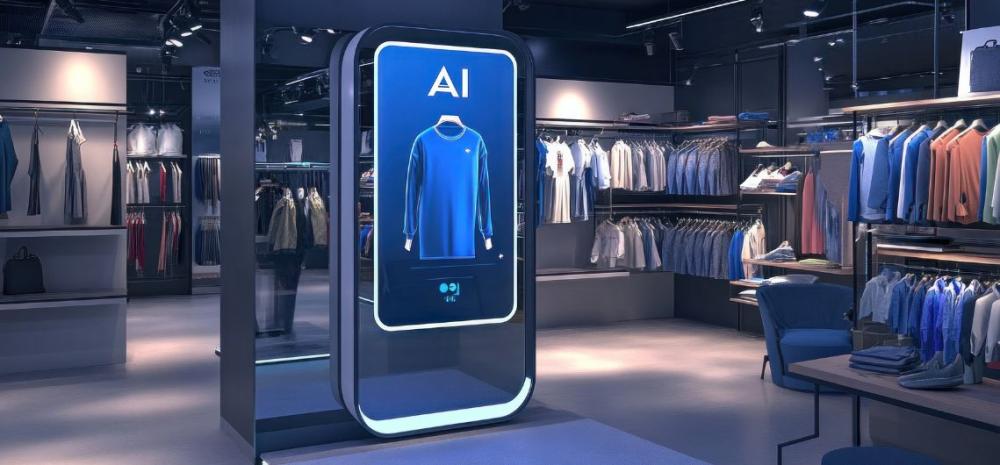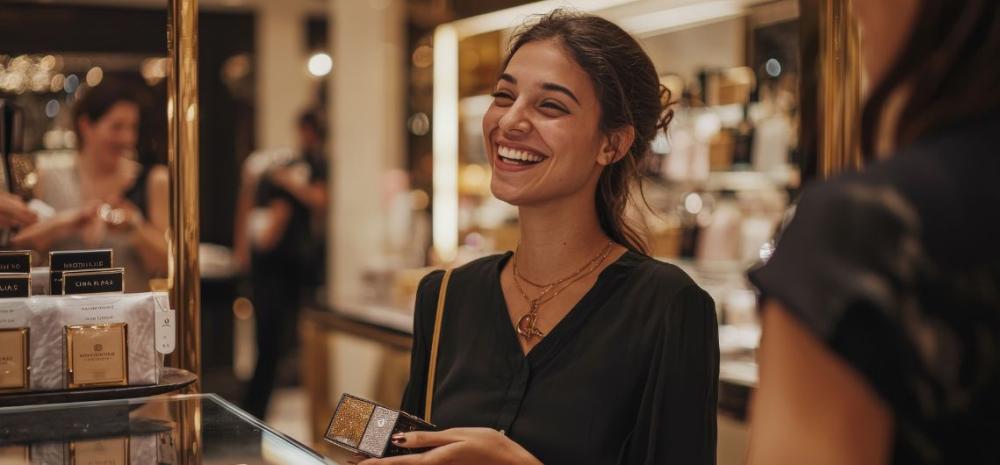In the ever-evolving landscape of retail, staying ahead of consumer preferences and market dynamics is crucial for success. The latest trends reflect not only the changing behaviors of shoppers but also the values they prioritize. From the boom of wellness to the emergence of phygital and creator commerce, the retail sector is undergoing a transformative shift. Additionally, sustainable practices are becoming a new standard, reshaping how businesses operate and engage with their communities. As we delve into these trends, it becomes clear that prioritizing customer experience remains a cornerstone of retail success.
Wellness Is Everything
The wellness sector is thriving across the retail landscape in response to the persistent high levels of stress in today's world. According to Euromonitor’s Voice of the Consumer: Health and Nutrition Survey from early 2024, 39% of Gen-Z individuals and 36% of millennials reported experiencing stress and anxiety on a daily basis1.
As revealed by a survey conducted by an architecture and design firm MG2, shoppers are increasingly prioritizing wellness in their lifestyle decisions, placing significant importance on displays that convey a sense of well-being for both their minds and bodies. The senses of sound, smell, and sight emerged as the top three integrated in-store elements that contribute to memorable experiences2.
The survey highlighted the diverse interpretations of "wellness" today. For instance, 54% of participants recognized physical activities, such as running or yoga, as practices that promote mindfulness. Additionally, 48% mentioned the importance of personal spaces for meditation or relaxation in fostering emotional well-being.
Approximately 60% of respondents expressed a desire for spaces dedicated to activities like meditation or exercise within wellness-oriented environments. In response, many retailers are reconfiguring their spaces to act as wellness hubs, providing services such as meditation sessions and mental health workshops. As discussions about mental health gain traction, there is an increasing demand for products that foster emotional well-being. Retailers are broadening their product lines to include items that support mental health, reflecting a more comprehensive approach to wellness. Notably, the top three themes identified for brands to highlight in a consumer-centric wellness experience were “healing,” “tranquility,” and “re-energizing.”
This phenomenon is observable across numerous industries; in the home and garden sector, wellness-focused brands and health-oriented product variants are consistently outpacing their categories. Additionally, leading sportswear brands are increasingly aiming their efforts at the female demographic. For instance, Puma's research on ACL injuries in women, Nike's Coaching HER initiative to support young female athletes, and ASICS' campaign promoting the mental health benefits of exercise all illustrate this strategic emphasis.
There is a clear differentiation strategy and product hierarchy that successful brands employ to position wellness as a premium offering. This trend is particularly prominent in industries like nutrition and personal care, which have made significant strides in adopting wellness-oriented approaches.
The connection between scent and wellness is rooted in science. Our sense of smell is directly linked to the brain's limbic system, which is responsible for emotions and memories. Many studies have shown that specific fragrances can reduce anxiety, improve mood, boost productivity, and even promote better sleep.
According to Givaudan, a top fragrance house, 89% of respondents believed scents could improve their well-being, bringing positivity to their lives2. With this in mind, customer-facing brands are exploring ways to infuse wellness into their spaces, using this as a new value proposition to impress and engage customers.


Phygital Retail: Giving Consumers the Best of Both Worlds
"Phygital Retail," also referred to as "Hybrid Shopping," is an emerging trend that combines physical and digital experiences in retail, facilitating a smooth interaction between both realms.
A worldwide survey indicates that 59% of consumers lean toward online shopping, whereas 41% still prefer the in-store experience. Baby boomers, who typically value traditional shopping methods, tend to appreciate the tactile elements of in-person shopping, with 58% favoring this approach. On the other hand, over 40% of Gen Z, the generation raised in the digital age, shows a strong preference for online shopping3.
The results suggest that physical retail continues to hold significance across various demographics, while also emphasizing the distinct needs and expectations of each generation. This requires retailers to find a balance between the tangible experiences offered by physical stores and the convenience of online shopping.
A survey by Globenewswire reveals that 95% of consumers research products online prior to purchasing, and 58% are willing to pay a premium for items associated with positively reviewed brands4. This highlights the critical need for retail brands to strengthen their online presence, manage their reputation, and engage effectively with consumers. By aligning their strategies with consumer behaviors, retailers can enhance brand loyalty, increase sales, and capitalize on the willingness of consumers to pay a premium for trusted brands.
Successful retailers are effectively merging their physical and digital channels to provide a unified customer experience. They utilize advanced inventory management systems, customer relationship management (CRM) tools, and sophisticated analytics to align operations across various touchpoints. IKEA's SleepEasy campaign serves as a prime example of effectively merging physical and digital channels to deliver a cohesive customer experience through cross-channel promotion, interactive showrooms, and personalized online tools. It combines educational content on sleep, seamless e-commerce integration, and encourages user-generated content on social media. This strategy enhances customer engagement, provides tailored recommendations, and fosters brand loyalty, making the shopping journey smooth and enjoyable. Sephora enables customers to test makeup either in-store or via its AR-based Virtual Artist app. Consumer feedback indicates that many shoppers favor self-guided experiences, making immersive product demonstrations a significant enhancement to the retail journey.


Creator Commerce: Inspiration-Driven Purchases
Once known as social commerce, creator commerce has emerged as a prevailing trend. Social media platforms — especially Instagram, YouTube, Facebook, and TikTok — are increasingly integrated into our daily interactions, making social shopping a part of everyday life.
Goldman Sachs forecasts that the creator economy will expand significantly, doubling in size to reach $480 billion by 2027. Additionally, it is anticipated that 50 million global creators will experience a growth rate of 10-20% annually over the next five years5. This shift allows users to transition seamlessly from discovering products to making purchases, enabling them to explore items, read reviews, and buy without leaving their favorite social networks.
Retailers should embrace content creators as essential members of their brand community. These creators provide a unique way to showcase products through authentic endorsements, building connections between consumers and the items they promote. This authenticity serves as a strong motivator for buyers, enhancing trust and impacting purchasing choices. Notably, 51% of Gen Z use social media to explore new ideas rather than solely researching products. Additionally, influencer recommendations are influential, with one in four Gen Z shoppers more inclined to purchase products that demonstrate high engagement on social platforms.
Creed's launch event for "Carmina" in Shanghai is a notable success case in experiential marketing, featuring an immersive experience that transported attendees into the fragrance's world. Held in a luxurious venue, the event attracted influencers and celebrities, enhancing visibility through social media. With artistic presentations and exclusive elements, it aligned perfectly with Creed's luxury brand image, making attendees feel valued. The event generated significant media buzz, increased brand awareness in the Chinese market, and led to positive reception and sales for the new fragrance, reinforcing Creed's reputation for craftsmanship and elegance. DJI, the renowned drone manufacturer, is another exemplar of effectively utilizing creator commerce for its product launches through a combination of strategic partnerships, influencer marketing, and community engagement.
There are many ways in which retail brands can turn online engagement into physical purchases. For example, retailers can create interactive displays or set up Instagram-worthy spots within the store that resonate with the aesthetics and values showcased on social media; they can also consider hosting events or pop-up shops featuring social media influencers to create a buzz that drives foot traffic. Community engagement, and personalized interactions, are other strategies that can not only complement social media influences but also enhance the overall shopping experience. This synergy between online inspiration and in-store fulfillment is key to capturing the attention and loyalty of today’s consumers.


Sustainable Practices: A New Retail Paradigm
Sustainability practices are now viewed as essential rather than optional, strategically integrated initiatives that operate under close consumer scrutiny.
Significant legislative changes, such as the introduction of the Digital Product Passport, are set to transform the fashion, apparel, and electronics sectors by enhancing material traceability and energy efficiency. In the B2B tech realm, more vendors are providing traceability software that positively influences sustainability standards. Additionally, Product Information Management (PIM) solutions, like Bluestone PIM, enable retailers to leverage centralized data for better forecasting, reducing overstock, and ultimately lessening their environmental impact. PIM software also streamlines the communication of eco-friendly product features, empowering consumers to make more sustainable choices.
With 66% of consumers around the globe willing to pay a premium for eco-friendly brands, retailers are increasingly adopting circular business models that prioritize recycling and upcycling6. At the same time, consumers are demanding more transparency in sourcing. This shift is reflected in the rising popularity of clean-label products, as shoppers seek clear information about the origins of their purchases. By integrating sustainability into their operations, McKinsey predicts that retailers could see a 20% increase in brand loyalty7.
Moreover, consumers are exploring additional sustainable shopping options. Market Data Forecast estimates that the global clothing rental market will grow to nearly $2 billion by 2026, effectively doubling its current size. Additionally, a study by Boston Consulting Group and Vestiaire Collective reveals that the second-hand market for clothing, shoes, and accessories contributes 3% to 5% of the total revenue in the retail sector.
The founder of Recurate, a platform that helps brands establish their own resale marketplaces, points out that the resale market is expanding at a pace 11 times faster than traditional retail. Almost 75% of consumers worldwide report participating in resale shopping, and the number of brands launching their own resale platforms has increased 3.4 times from 2022 to 2023. According to ThredUp, the global resale market could potentially reach $350 billion by 2027, with an estimated $70 billion of that amount expected to come from the U.S8.


Customer Experience Remains a Cornerstone of Retail Success
As the retail landscape evolves, exceptional customer experience remains paramount. Retailers can differentiate themselves by enhancing sensory experiences, such as ambient scenting, which fosters emotional connections and creates inviting spaces. Crafting memorable in-store atmospheres that resonate with consumers' desire for well-being or creating scent-infused packaging for online purchases are strategies that retailers can adapt in response to the latest retail trends.
In addition, as home fragrance products are increasingly seen as essential tools for enhancing the home atmosphere, especially as people seek refuge from daily stressors, retailers can look to custom scent products as a powerful tool. By offering a curated selection of wellness-focused fragrances that emphasize clean, ethically sourced ingredients, retailers can align with consumers' wellness priorities.


Conclusion
As we navigate this new era of retail, the emphasis on wellness, sustainability, and exceptional customer experiences is reshaping how brands connect with consumers. Retailers are not merely selling products; they are curating experiences that resonate on a deeper level, fostering emotional connections and promoting healthier lifestyles. By embracing trends like phygital retail, creator commerce, and sustainable practices, brands can not only meet the needs of today’s consumers but also build lasting loyalty in an increasingly competitive market. Ultimately, the future of retail lies in understanding and prioritizing the holistic well-being of consumers, ensuring that every shopping experience contributes positively to their lives.
Are you ready to align your marketing strategy with the future of retail? Contact us to learn more today!
Sources:
1. Liying Qian & Marguerite LeRolland (2024). Women’s Health and Self-Care Fashion: Blurring the Lines Between Hygiene, Apparel and Technology. Euromonitor International.
2. MG2 Advisory (2024) Holistic Health: Consumers are seeking wellness in everything they do – how are you showing up for them?
3. Caitlin Nuttall (2024). 10 retail trends for 2025: Charting the future of retail. GWI.
4. Brand Rated (2022). Nine out of ten customers read reviews before buying a product. GlobeNewswire.
5. Zuzanna Martin (2024). Top 11 Retail Trends Shaping 2024 and Beyond. Bluestone PIM
6. Jessica (2024). Eco-Friendly Consumers: 10 Eye-Opening Statistics & How You Can Join the Green Revolution. Marine Biodiversity Science Center.
7. Cegid (2024). Retail Trends 2024: Generative AI, Mobile Commerce & Sustainable Shopping.
8. Alison Zeller (2024). Top 11 Retail Trends (2024 & 2025). Exploding Topics.





